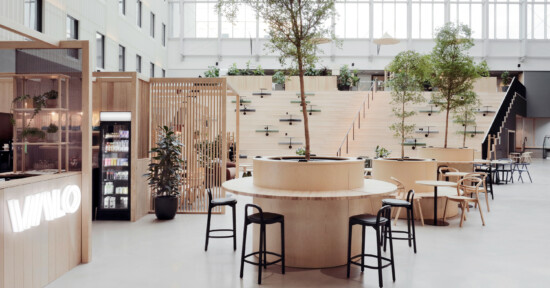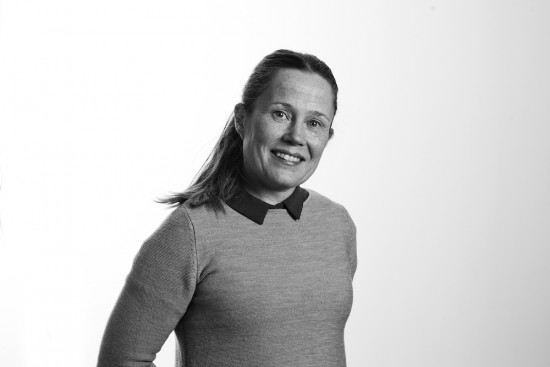One of the themes of this year’s Hotel Interior Exhibition (HIX) was the role of hotels in the future of work culture. Minna Hurme participated in a panel discussion, sharing her insights on the transformation of work.
;)
I attended the HIX event (Hotel Interior Exhibition) in London two weeks ago. The invitation to the panel discussion was sent in September, so I had plenty of time to first be nervous and then prepare for the topic: “Nomadland: How can hotels prepare for the future of work?”
I was joined by Paul Dare, Head of Design at Morgan Lovell design firm in London, and Michelle Guss, Vice President of Hospitality at Crestron in Arizona. The moderator was Kristofer Thomas, Head of Content at HIX. Fortunately, the specific topics were sent in advance, covering the merging of hotels and workspaces, the transformation of work, hybrid work, the evolution of the hospitality industry, and the phenomena behind these changes.
The overarching impression from the entire trip was a very simple and concrete observation that the world is a very small place. Companies and individuals in the same industry follow each other’s activities, just as I do. I also made new acquaintances, gained inspiration from various panel discussions, and had a pleasant sense of accomplishment for daring to step out of my comfort zone and take on the challenge.
So, what did we actually discuss? Mostly about VALO Hotel & Work. It was amazing to see the interest in VALO’s dual-use concept in London, its dimensions, and the benefits related to sustainability, customer experience, and the financial perspective.
“Hybrid work models are changing the world more than we might think.”
Hybrid work models are still changing the world more than we might think. The post-pandemic transformation of the living environment is just beginning. We can only speculate where it will lead. Flexibility, well-being, widely available technology, hybrid work, the merging of leisure travel and work, encounters, and collaboration; various themes intertwine as drivers of change.
Work models and environments are expected to provide more and more services and flexibility. Enabled by digitization and hybrid work models, the ways people work are moving closer to the form that best suits the employee’s daily life, taking into account companies’ specific features and management styles. The ability of employees to choose where to work will inevitably become more common, especially in large cities. We talk about a 15-minute city, where basic services and work should be within a 15-minute distance from home. Work environments are expected to offer services that were not previously available. Work is done from various locations during the week, but companies don’t want to pay for unnecessary square footage.
In London, the same topics were discussed as in Finland: Are people willing to travel an hour away every weekday? What should the office be like to get people moving? Can people be forced to the office? Both employers and employees are trying to find the most effective ways to solve the challenges, aligning the interests of both parties. Employers need to address leadership challenges and preferably not pay for unnecessary square footage in different locations. On the other hand, employees hope for modern, versatile, and comfortable spaces, services, and flexibility. We agreed that new hybrid environments serve both perspectives well. In a combination of hotel and office, the same services can be offered to office customers as to hotel customers with almost the same resources. A hybrid property serving multiple customer segments can solve several challenges:
Once we had discussed the benefits of combining hotels and offices, we moved on to discuss more about design. How can we solve the different design typologies of hotels and offices and overcome customers’ preconceived expectations regarding different types of spaces? Hotel spaces are expected to offer more relaxation and enjoyment, while workspaces are expected to provide energy, versatility, and functionality.
I talked about VALO’s design process. In the early stages, we understood that we had to create a new environment that does not conform to the usual hotel norms or clearly resemble a workspace but is something in between. Many solutions and opinions fit into that space. Initially, we tried to design more like a hotel, but at some point, we realized that it is not an attractive enough environment for modern work and encounters. After a few twists and turns, we found the right direction.

During the design process of the concept, sustainability increasingly became a prominent aspect in various contexts. We realized that a dual-use concept like VALO’s is at the core of sustainability related to property use. At the same time, some hotel brands originating from Europe introduced new brands to the market, offering fresh interpretations of modern meeting environments. We decided to follow these signals. VALO’s dual-use hotel/workspaces differ in many ways from traditional design typologies, especially regarding hotel rooms. They combine functionally and visually the needs and ambiance of two different customer segments. The core idea of VALO’s design and brand became sustainability in various forms, with additional elements of Finnish clarity, natural light, abundant details, authenticity, and changing atmospheres from one space to another.
The last question of the panel discussion was: How do you see the environments related to future work and accommodation?
Crestron’s Michelle responded: It’s like VALO.
That was a good way to end – what an atmosphere, warmth, and encouragement were around me.

Head of Design, Minna Hurme
VALO Hotel & Work
